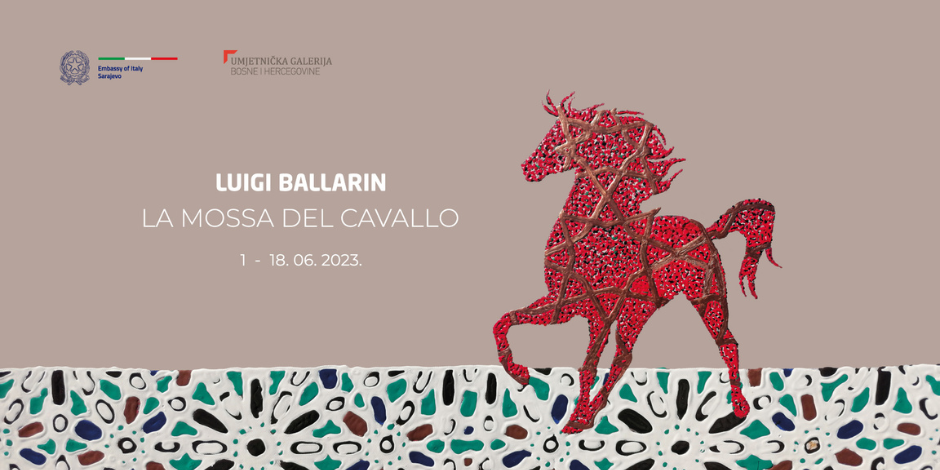
Luigi Ballarin
The Knight’s Move
June 1-18, 2023
National Gallery of Bosnia and Herzegovina
In collaboration with the Embassy of Italy in Bosnia and Herzegovina, the exhibition “The Knight’s Move” by Luigi Ballarin will be opened on June 1 at 6 pm.
Reflection of art through the spirit of Knight
Knight class that existed in Italy during the Middle Ages; had warrior and military skills. Knights’ horses were statue symbols. Horses indicate power, status, wealth; they would run from victory to victory by integrating with their durable and fast horses. The knights took great care of their horses, which were an indispensable part of their lives. While running to the enemy lines with their horses in battles; they would be strong, agile, integrated like a weapon.
Horses had an important place not only for knights but also for Italian culture. Throughout history, horses had taken part in wars and agricultural activities in Italy, and they also been an important part of Italian art and literature. In the history of Italian painting, horse figure has often used. In particular, Renaissance painters portrayed horses as elegant and beautiful, in accordance with the aesthetic understanding of the Renaissance. Instead of depicting the horse figure in a natural way, they preferred to idealize it. Leonardo da Vinci’s painting “The Sforza Horse” was made to show the beauty and grace of the horse. Raffaello Sanzio da Urbino, who lived at the same time as Leonardo da Vinci, frequently used horse figure in his works. Especially in “The School of Athens” the horse figures that he used reflects the heroic spirit of the warriors.
Horse is also an important symbol in Eastern culture. Therefore, horse figures play an important role in Orientalism painting. In this day, Luigi Ballarin uses horse figure in his art in both traditional and contemporary styles. While depicting the figure realistically, the artist transforms the contemporary horse figures, which he reflects on his canvas, into an abstract expression with an orientalist perspective. He interprets the meaningful symbol with power, movement, freedom, energy, speed, grace, tradition, nobility, heroism… with a metaphorical expression on his canvas. He skillfully uses horse anatomy in his designs. He expresses the important horse breeds of the Italians such as Arabo Sardo, Maremmano, Cavallo Romano della Maremma Laziale, San Fratello, and important breeds of East such as Arabian horse, Turkish horse, Turkmen horse in his patterns.
As a result horse; is seen as power, speed, freedom, independence, courage, loyalty, harmony and status in world culture. While describing his art within this cultural richness; Luigi Ballarin makes his works with a passionate, determined, honest, courageous, loyal, noble and a respectable knightly approach as if he is at war with the canvas.
Beste Gürsu
Curator
